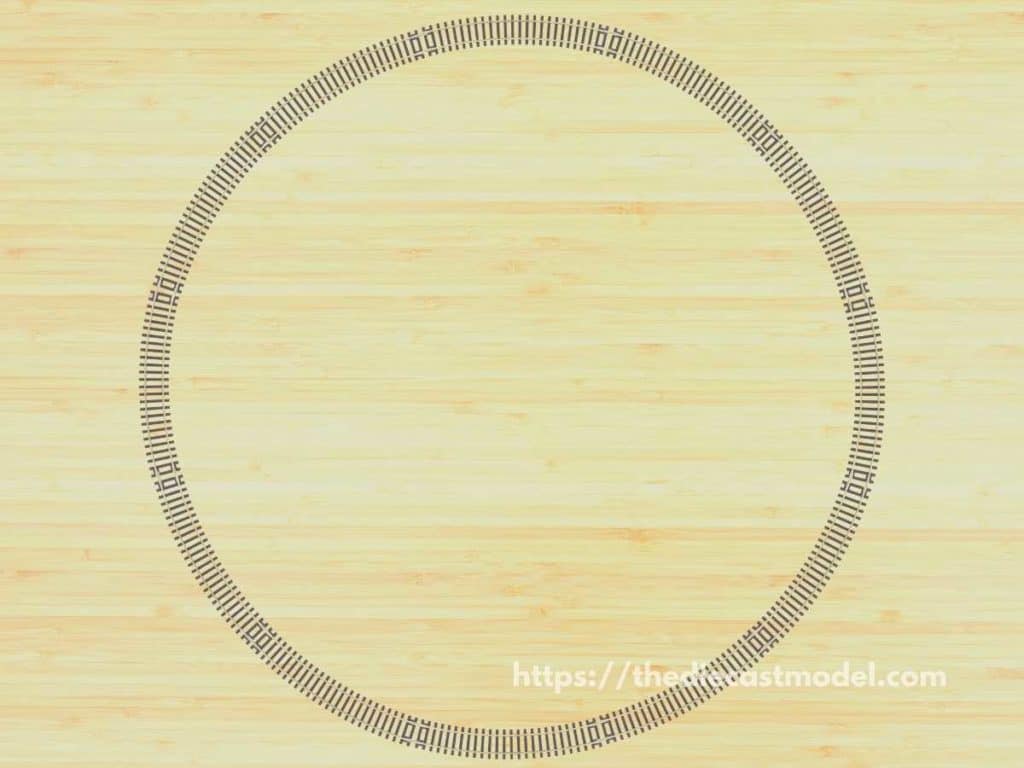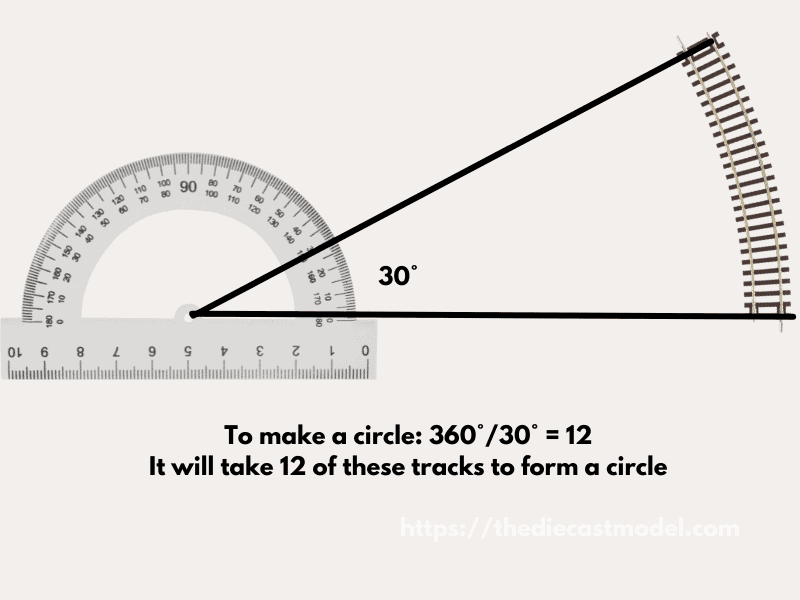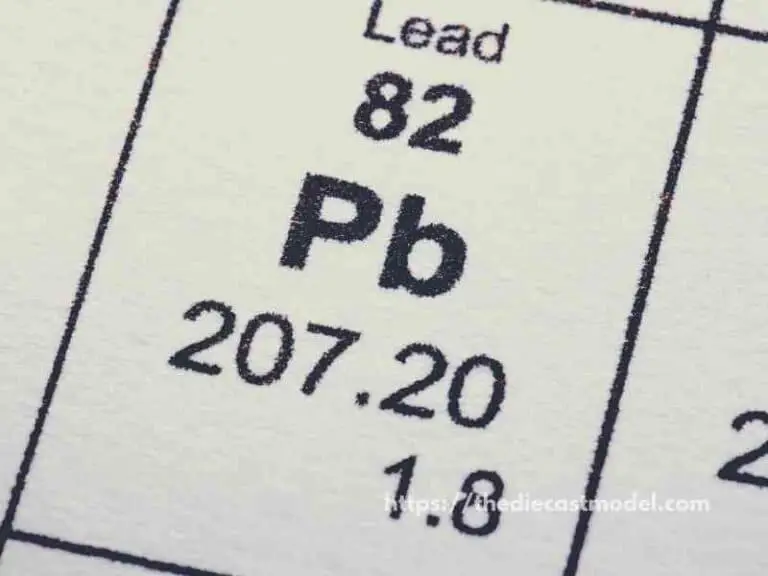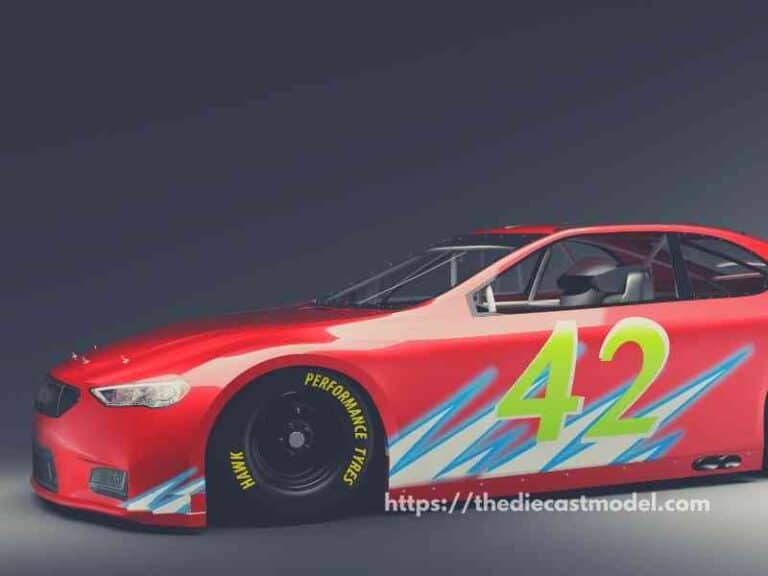How many pieces of track make a circle? A Guide on Common Scale Tracks
When starting your train layout, one of the common problems is knowing how many tracks would it take to make a circle. This is an important question since we don’t want to buy more or fewer tracks than we need. Unfortunately, model railroading is quite expensive, and saving a few bucks by only purchasing the things you need would add up to huge savings. Thus, I decided to help and write this post.
As a general rule, it takes 8 pieces of 45° tracks, 12 pieces of 30° tracks, and 16 pieces of 22.5° tracks to form a circle. Standard O scale would usually use 8 pieces, most N scale would need 12, and HO scales can take 8 or 12 depending on the type of their curve.
This post will discuss the three most common scales and how many tracks it would usually take to form a circle. Furthermore, we will also discuss how you can find it yourself with some simple computations.

How many pieces of HO track make a circle?
Generally speaking, it takes 16 pieces of tracks to make a circle on standard curves, while it takes 8 pieces of tracks to make a circle on a double curve for HO tracks. However, there are some exceptions on tracks that don’t fall on these categories.
The HO track is the most common track used in model railroading accounting for 60-70% of train layouts.
Furthermore, these are also the tracks used by the OO scale, which is popular in the UK.
Because of its popularity, there are a huge variety of tracks on the HO scale. This is why some HO scale tracks would need 8 to 16 of the same curved tracks to form a circle.
However, most HO scale tracks can be divided into two, which are the standard and the double curve tracks.
When we say that the HO track is a standard curve, it has an angle of 22.5°, and it would take 16 of these to form a circle.
The double curve HO tracks have an angle of 45° and would take only 8 to form a circle.
However, some exceptions, like the 15″ and 18″ radius HO track, would need 12 pieces.
Since some HO tracks don’t fall on these two categories, the best way to find out is through computation.
Don’t worry because I will teach you how to compute how many would it take to make a circle later.
Here is a table summary of the HO scale tracks you can find and how many tracks you would need to form a circle.
| HO Scale Track | Amount Needed to Form a Circle |
| 15″ HO Track | 12 |
| 18″ HO Track | 12 or 16 |
| 22″ HO Track | 16 |
| 24″ HO Track | 16 |
| 26″ HO Track | 20 |
| 28″ HO Track | 20 |
Note: For the 18″ HO track, it depends on the brand. For example, Bachmann’s EZ track would need 16, while Atlas Code 83 would only need 12.
How many pieces of O track to make a circle?
As a general rule, it would take 8 pieces to make a circle on the standard O and the O27 track. However, some variations of the O scale would take 12, 16, or even 32, such as the O48, O60, and O96, respectively.
Before the HO track became the most popular scale for train modelers, the O scale dominated the market.
The O scale is on the 1:48 scale, making it larger than the common HO scale.
Since the O scale is once the most popular, there are also a lot of varieties to the O scale tracks.
However, the standard O scale, which is O31, would only need 8 pieces to form a track.
This includes the second most popular O scale track, which is the O27 which also needs 8 pieces to form a track.
But what are the numbers in the O scale? The 31 and 27 refer to the circle’s diameter these tracks make.
For example, the standard O or O31 would have a 31″ circle track diameter, while the O27 would have a 27″ circle track diameter.
Recommended read: O and O27 have a lot of differences other than the size, such as materials and compatibility. For a post discussing the difference between O and O27, check this post: Standard O vs. O27.
While these two are the most popular O scale track, there are other minor varieties of the O scale, such as O42, O54, O72, O82, O90, O96, and more.
Using the rule above, you can quickly guess that O42 means their circle track would be 42″, O54 would be 54″, etc.
Here is a table summary of the O scale tracks you can find and how many tracks you would need to form a circle.
| O Scale Track | Amount Needed to Form a Circle |
| O27 | 8 |
| O31 | 8 |
| O36 | 8 |
| O48 | 12 |
| O60 | 16 |
| O72 | 16 |
| O84 | 32 |
| O96 | 32 |
Note: There are also Super O tracks. Super O tracks are a type of O36 which means it would need 8 pieces to form a circle.
How many pieces of N track to make a circle?
Generally speaking, the amount of N scale tracks to form a circle depends on the type and brand of the track. For example, Atlas code 55 tracks would need 16 pieces, Atlas code 80 tracks would need 12, and Kato Unitrack would need 8. However, there are exemptions to this rule.
The N scale is the trickiest to generalize how many would it take to form a circle since there are many factors to consider, such as the track type and brand.
However, if it can be summarized, this depends on the brand and the size of the rail.
For example, most Atlas code 55 N scale tracks would need 16 pieces except their 30.609″ and 71″, which would require 32 and 44 respectively.
Most Atlas code 80 tracks would need 12 pieces except their 19″ curve track which would require 24.
Most Kato Unitrack would need 8 pieces to form a circle except their 15″, 19″, and 28 1/4″ track.
Here is a table summary you can use for how many tracks you would need for the N scale to form a circle.
| N Scale Track | Amount Needed to Form a Circle |
| 10″ – 21.25″ Atlas Code 55 Track | 16 |
| 30.61″ Atlas Code 55 Track | 32 |
| 71″ Atlas Code 55 Track | 44 |
| 9.75″ – 11″ Atlas Code 80 Track | 12 |
| 19″ Atlast Code 80 Track | 24 |
| 9.75″ to 13.75″ Kato Unitrack | 8 |
| 15″ Kato Unitrack | 12 |
| 19″ to 28.25″ Kato Unitrack | 24 |
As you can see, memorizing how many tracks you would need is a huge problem. Furthermore, other scales such as G, T, or Z scales use different tracks.
Listing all of those would be too much, so I will teach you how to compute it yourself in the next section.
That way, no matter the scale and type, you can figure out how many you would need.
How to measure the model train track angle?
To measure the model train track angle, you need to line both ends of the track and connect it with a protractor. This will measure the angle of the track, and you can divide 360 to the angle to know how many tracks would it take to make a circle. (See illustration below)

While I discussed the generality of train tracks, there will always be an exemption for every rule.
There might be hundreds of brands and types of tracks for me to include everything.
Thus, I decided to teach you how to calculate using a calculator and a protractor.
As you can see in the illustration above, all you need is a protractor.
Now, you have to draw a line from both edges of the track until it meets in the middle. This is where you are going to check the track angle.
But why is this important? Well, to know how many tracks would it take to form a circle, you need to know the turn angle of the track. So this is how to measure them manually.
A circle would always be 360°. Thus, you only need to divide 360 to the turn angle to determine how many tracks it would take to form a circle.
So, using the example above, we can see that when the lines reach each other and you measure it with a protractor, you can see that the track is a 30° track.
Thus, if you divide 360° with 30°, the answer will be 12.
Therefore, it would take 12 of those tracks to make a circle.
You can use this method on any scale and any track. By knowing this, you won’t need to memorize the number of tracks it would take to form a circle.
What’s next? Do you know that one of the most popular O scale model brands is Lionel? They have been around for more than a century and introduced many of the varieties of the O scale. However, they phased out some of their old tracks, and many wonder if they can use their old trains on newer rails. That’s what I discussed here: Will Old Lionel Trains work on New Rails?







